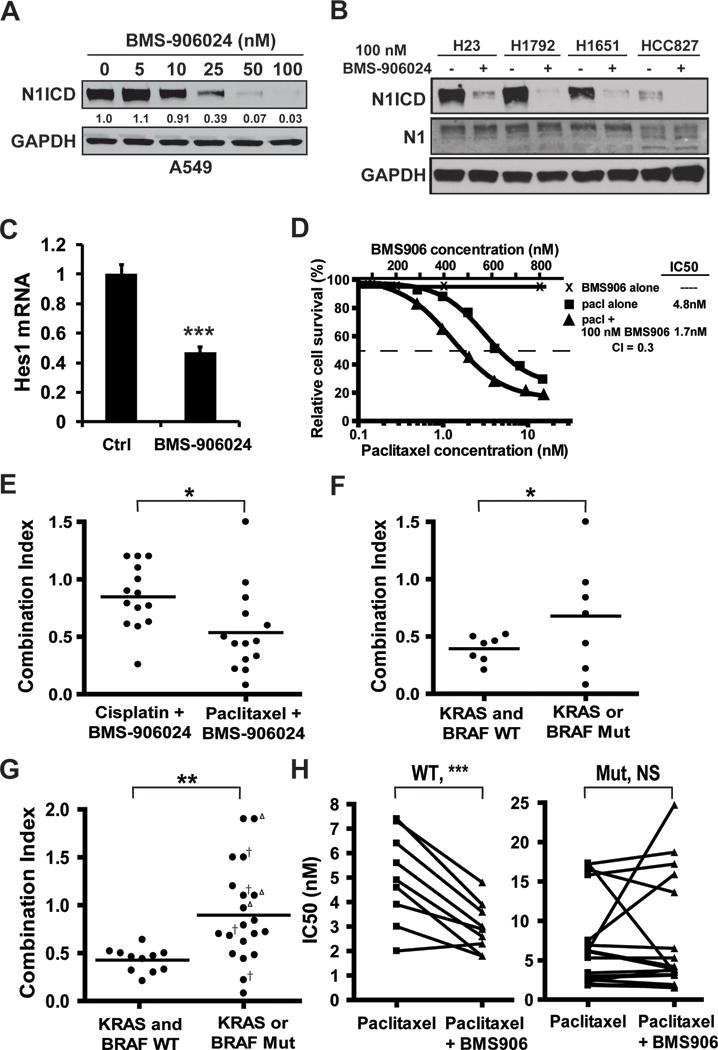Figure 1.

BMS-906024 is a potent inhibitor of Notch activation and enhances the anti-tumor activity of paclitaxel in vitro. A, BMS-906024 treatment of NSCLC cell lines for 72 hrs decreases levels of Notch1 intracellular domain (N1ICD). The change in N1ICD protein levels relative to untreated cells (0 nM) and normalized to GAPDH is indicated below the immunoblot. B, treatment with 100 nM of BMS-906024 for 72 hrs maximally decreases N1ICD without affecting total uncleaved Notch1 (N1). C, downregulation of Hes1 mRNA in A549 NSCLC cells treated with BMS-906024 for 24 hrs. Error bars represent standard deviation. D, chemosensitivity MTS assay performed on H2228 NSCLC cells treated for 72 hrs with BMS-906024 (BMS906), paclitaxel (pacl), or 100 nM BMS-906024 and paclitaxel. E, Combination Index (CI) values from 14 NSCLC cell lines treated with 100 nM BMS-906024 and either cisplatin or paclitaxel for 72 hrs. F, CI values at the IC50 for BMS-906024 and paclitaxel in 14 NSCLC cell lines grouped by KRAS/BRAF status. G, CI values at the IC50 for BMS-906024 and paclitaxel in 31 NSCLC cell lines (including the 14 shown in E) grouped by KRAS/BRAF status. Open triangle, KRAS-dependent cell line; †, KRAS-independent cell line. H, shift in IC50 values for the KRAS- and BRAF-WT (left) or the KRAS- or BRAF-mutant (right) cell lines when treated for 72 hrs with paclitaxel alone or paclitaxel and 100 nM BMS-906024. Outlier cell lines that were paclitaxel-resistant were removed from these graphs (WT: H1838, H1693; mutant: H1395, H2405). *, P < 0.05; **, P < 0.01; ***, P < 0.001. NS, not significant.
